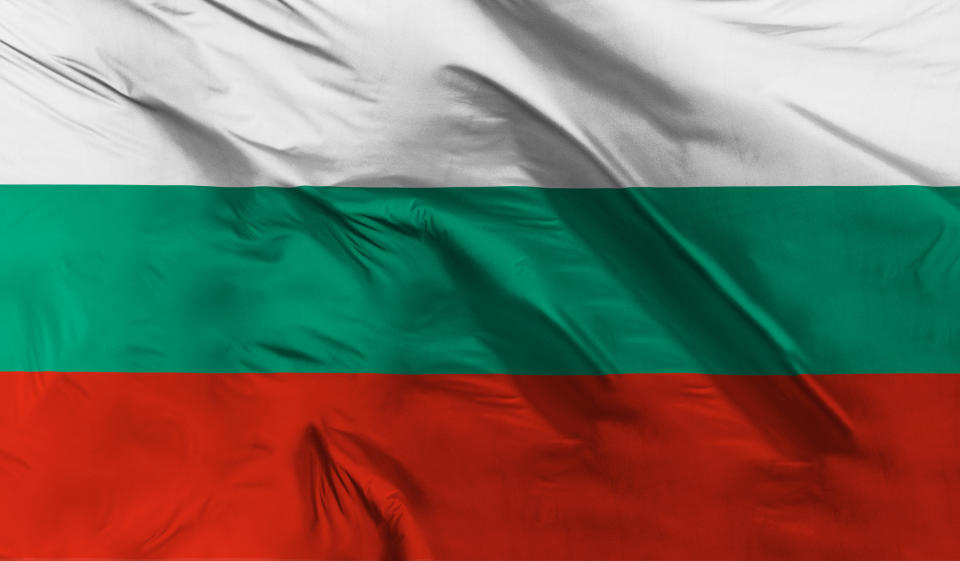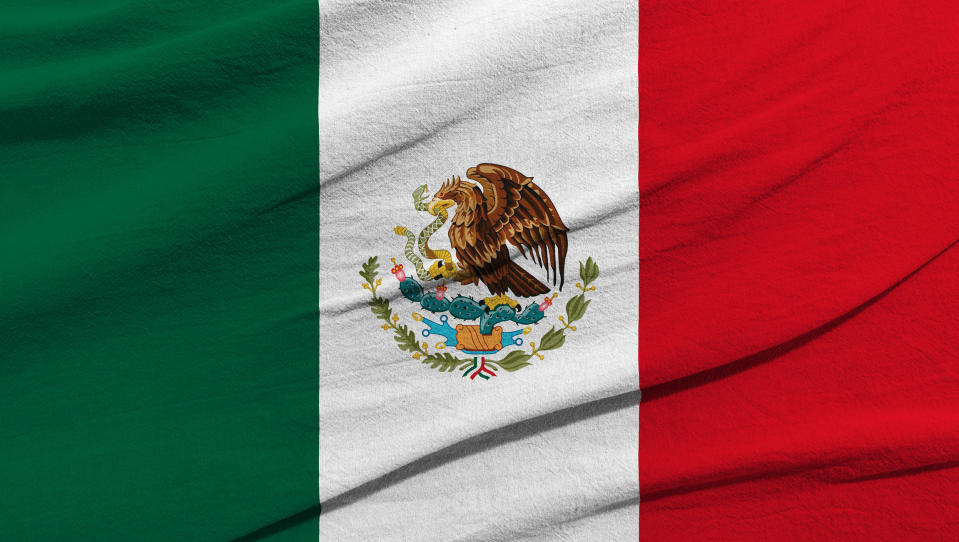13 Countries With Green-White-Red Flags

From the coat of arms to the arrangement of stripes to the colors, flags tell us about the history and ethos of a country. Take the United States' flag, for example, where the 13 horizontal bands represent the original colonies and the 50 stars stand for each state.
Here, we'll dive into the countries with green, white and red flags and explore the meaning behind each tricolor flag.
What Do Green, White and Red Represent in Flags?
Green, white, and red flags feature two of the most represented flag colors (red and white). While not every flag with this mix of colors has the same meaning, this is what green, white and red typically stand for in the in flags around the world.
Green in Flags
Green represents nature, fertility and the earth. It's a common color found in the flags of Muslim-majority countries, such as Pakistan, Bangladesh and Iran.
White in Flags
White symbolizes peace and innocence. It can also mean surrender. Countries that have white in their flags include Monaco and Uruguay.
Red in Flags
Red represents revolution and blood. Monaco's, Tonga's and Greenland's flags prominently feature the color red.

1. Algeria
Algeria's flag is a half-green, half-white flag with a red crescent moon and red star of Islam in the middle. The National Liberation Front adopted the Algerian flag, which derives from an older design, in 1954.
Four years later, it became the flag of the exiled provincial government until it became the official flag when the country gained its independence from France in 1962.
According to "Complete Flags of the World" by DK Publishing, "The green in the hoist is the traditional color of Islam and the white represents purity. The horns of the crescent are longer than usual and represent increase or good fortune and happiness, whilst the whole emblem recalls the period of Ottoman rule during the 16th century and its color, red, is symbolic of liberty."

2. Belarus
Belarus' flag features a wide red stripe atop a more narrow green one. Along the flagstaff, there is an ornamental pattern. According to the Belarusian government, the country is the first to use an ornamental pattern on a national flag.
"The ornamental pattern is a symbol of the centuries-old culture of the nation and its spiritual wealth," according to the President of the Republic of Belarus' website. "The ornamental pattern in the National Flag stands for bread, harvest and procreation; celebrates diligence and prowess which are the cornerstones of people’s good fortune.
As for the colors, in this flag, red stands for power and energy, green represents hope and natural harmony, and white represents purity and knowledge.

3. Bulgaria
The Bulgarian flag features three horizontal stripes in white, green and red. In his book, "Nationalism From the Left: The Bulgarian Communist Party During the Second World War and the Early Post-war Years," lecturer and researcher Yannis Sygkelos says the flag is a nod to the contemporary.
"Although the national emblem might have its roots in the ancient or recent past, the national flag is a matter of modernity," Sygkelos writes.
The emblem features a lion, which wore a crown at one point, a cogwheel and ears of wheat.

4. Burundi
Adopted in 1962, the Burundian flag is a red-and-green flag with a white saltire (a cross). The saltire features three red stars outlined in green that represent the Tutsi, Hutu and Twa ethnic groups.
The green stands for hope, the white symbolizes peace and the red represents the blood shed during the country's fight for independence.

5. Hungary
The current flag of Hungary has three stripes, with red at the top, white in the middle and green at the bottom. A previous version of the constitution states, "The flag of the Hungarian People's Republic is a red, white and green banner charged with the emblem of the Hungarian People's Republic."
The emblem featured a hammer and an ear of wheat and a five-pointed star. That version of the flag was in use between 1949 and 1956.

6. Iran
The Iranian flag features three horizontal bands of green, white and red. The green symbolizes Islam, the white freedom and the red bravery and love. At the center is a tulip-shape design.
Sometimes, activists and others protesting the government will hoist a different version of Iran's flag, where the Lion and Sun emblem (though this is illegal) or nothing will replace the emblem in the middle, known as the Nishan Rasmi.

7. Italy
The Italian flag is relatively simple — so much so that the constitution merely says, "The flag of the Republic is the Italian tricolor: green, white and red, in three vertical bands of equal size."
Created in 1797 in the city of Reggio Emilia, the flag stands for "freedom, solidarity and equality and embodies Italy's extraordinary and universally recognised historical and cultural heritage and identity."

8. Lebanon
The Lebanese flag features two red stripes at the top and the bottom and one white in the middle. According to the country's constitution, "The width of the white stripe shall be equal to that of both red stripes. In the center of and occupying one-third of the white stripe is a green cedar tree with its top touching the upper red stripe and its base touching the lower red stripe."

9. Madagascar
The Madagascar flag has a vertical white stripe next to two horizontal bands in red and green. The country first started using the flag in 1958.

10. Maldives
Maldives' flag has a white crescent moon at the center of a green rectangle; a red border surrounds the green.
As the constitution states, "The width of the national flag is two-thirds of its length. The width of the red border is one-fourth of the width of the flag. The radii of both curvatures crescent are one-third of the width of the green rectangle."

11. Mexico
The Mexican flag first came into use in 1821, the year it gained independence from Spain. But back then, it looked slightly different. It featured green, white and red diagonal stripes. By 1823, the eagle at the center of the flag lost its crown but gained laurel and oak.
Originally, the color green represented independence, the red equality and the white the union between Spain and Mexico. When Benito Juárez became president in the mid-19th century, he changed the meaning of the colors, where green stood for hope, white for unity and red to honor the blood shed by national heroes.
Record-setting Flag
Mexico once held the Guinness World Record for largest flag flown. In 2011, a 112-foot (34.4-meter) by 196-foot (60-meter) fag flew in Piedras Negras. Gharably Interated Engineering Company broke the record in 2022 when it flew a larger flag in Egypt.

12. Oman
Adopted in 1970 and updated in 2004, Oman's flag has three horizontal bands of white, green and red and a vertical red band on the left side.
The white represents the "conviction of the Omani people in peace." The red is "from the old Omani flag, which was all red. It symbolizes the battles fought by the Omanis to evict foreign invaders from the country." And finally, the green "represents the fertility and greenery of the land."
On the top left side, the flag also features its national emblem, a traditional curved dagger and belt with two crossed swords.

13. Wales
Wales has white and green stripes and a red dragon in the middle. The flag first came into use in 1959, but the country has had a connection to the red dragon for longer than that.
"Compared to other nations, the Welsh have had a positive relationship with the dragon over the centuries, with heroes praised for being dragon-like," said Mared Llywelyn, who wrote her master's research on the symbol, to the BBC.
Original article: 13 Countries With Green-White-Red Flags
Copyright © 2023 HowStuffWorks, a division of InfoSpace Holdings, LLC, a System1 Company


